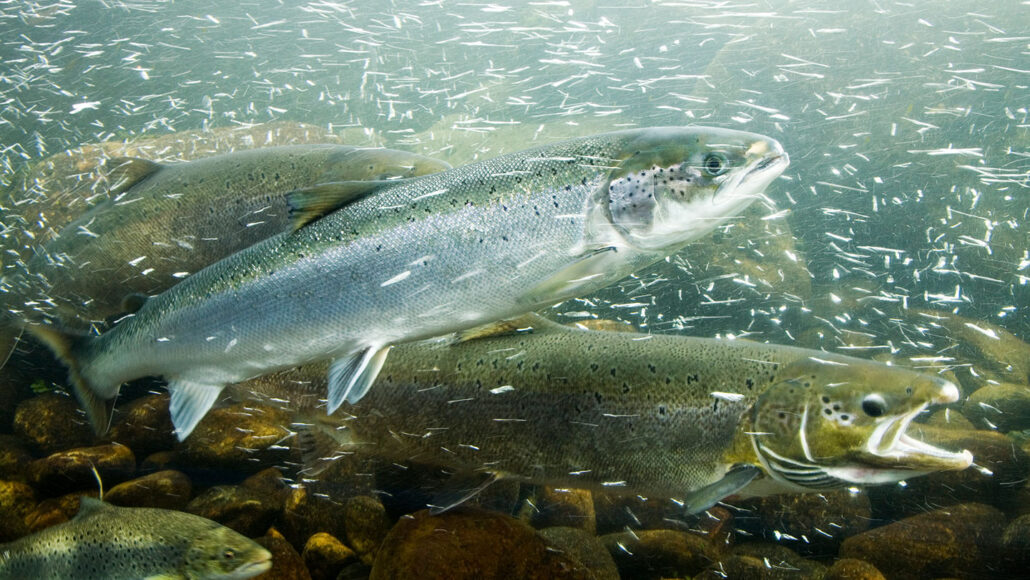Using Cold Water to Lower Temperatures in Rivers to Benefit Fish

In PITTSBURGH, it was discovered that salmon may possess a likening to air conditioning methods used by humans.
Last summer, hundreds of fish residing in Canada's Wrights River in Nova Scotia sought solace from the heat by congregating in cold water plumes created by humans, according to a report by civil engineer Kathryn Smith at the Geological Society of America meeting on October 17. Although the research is merely proof of concept, it's hoped that it will assist conservation endeavors for cold-water species as global warming causes a rise in river temperatures.
Atlantic salmon and other cold-water species inhabiting rivers often flee to colder zones in times of elevated water temperatures, which can cause them significant stress or even result in death. These zones are normally found around groundwater springs or cooler tributaries.
"Numerous efforts have been made to protect and develop these naturally occurring sanctuaries," noted Smith from Dalhousie University in Halifax, Canada. "Yet there hasn't been any particular focus on our ability to artificially create such cold-water habitats."
To determine this, Smith and her team pumped groundwater sourced from a nearby well into the river. The water was approximately 9° Celsius (or about 48° Fahrenheit), resulting in an artificial water plume as much as 20 degrees Celsius cooler than the water around it.
This man-made plume drew in several hundred fish from varying stages of life and species, including brown trout and Atlantic salmon. Most of the fish were alevins—juveniles still connected to yolk sacs—that remained in the plume for the duration of the tests. However, the arrival of a heatwave and a consequent rise in water temperatures to roughly 30° C led to older fish also seeking refuge in the plume.
The team explored a pump-free alternative by diverting some river water into an underground trench. Here, the water cooled before re-entering the river. Despite only reducing the temperature by a few degrees Celsius, the passively cooled flow was visited by fish throughout the summer.
A consulting engineer from Hazleton, Pa., John Ackerman, not involved in the research, suggests that further investigation is needed to ascertain the quantity of these sites required for them to significantly impact fish populations, and how this can be balanced with maintaining low energy expenses. Nonetheless, the researchers have shown the effectiveness of these solutions. In his words, "The concept is solid."
Your contribution as a reader has made this article possible. Please continue to support quality science journalism by making a donation today.




